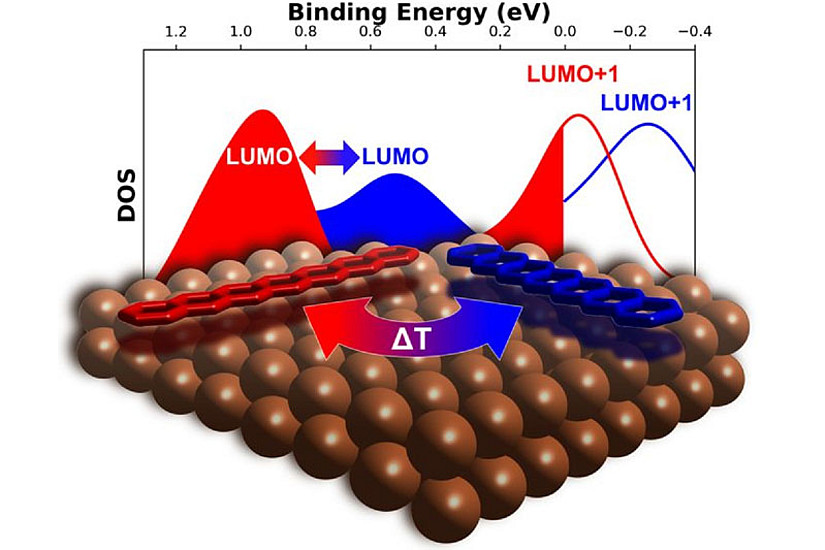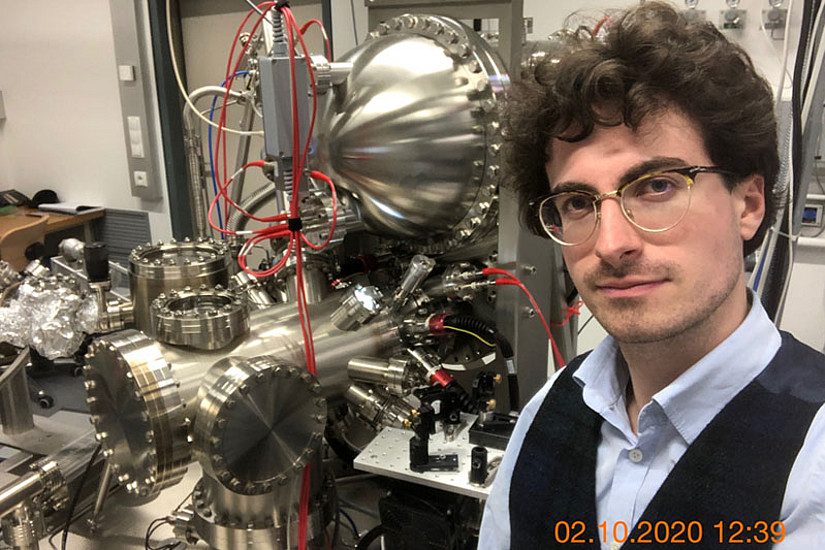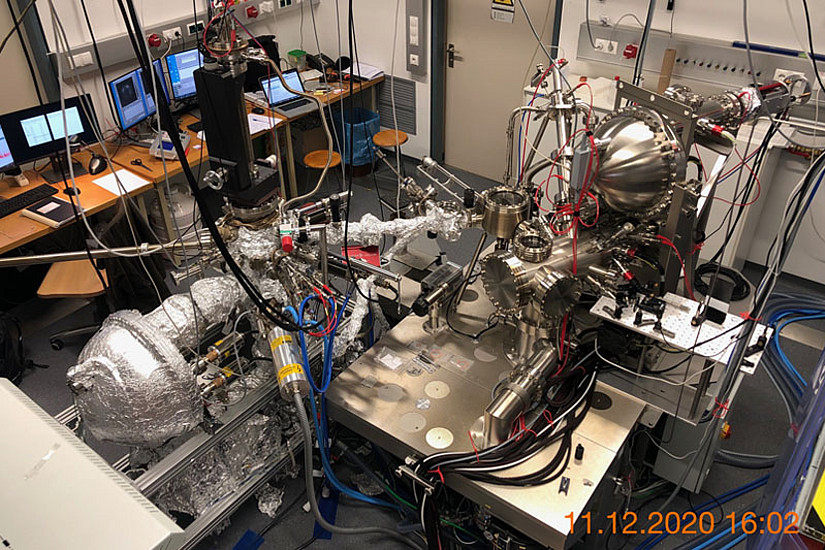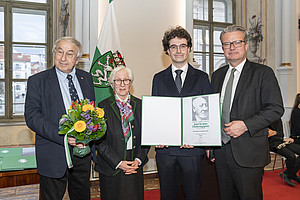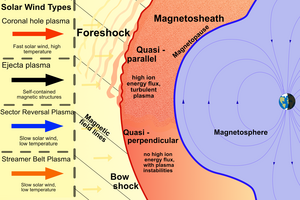A team of researchers of the University of Graz (groups of Prof. Sterrer, experimental physics and of Prof. Puschnig, theory) in collaboration with the University of Tübingen (groups of Prof. Bettinger and Prof. Chasse) constructed a previously unexplored molecule-metal system to investigate the properties and abilities of organic semiconductors. The study was carried out by momentum microscopy, a highly sophisticated method to explore the electronic structure of nanomaterials. It was conducted at the momentum microscope of the NAWI Graz Core Facility "Photoemission Electron Microscopy for Nanomaterials" in cooperation with researchers from the Institute for Experimental Physics (group Prof. Schultze) at the TU Graz. This allowed the detection and controlled modification of the unique electronic properties of the studied metal-organic semiconductor system.
Complex Preparation of Longchain Acenes
Acenes belong to the group of polycyclic aromatic hydrocarbons. They consist of linearly fused benzene rings, imaginable as a one-dimensional graphene chain. The here studied molecule heptacene (7A) consists of seven benzene rings and was synthesized at the University of Tübingen, Germany in a complex routine. The researchers in Graz were able to prepare the synthesized molecule into monomolecular thick layers applying an evaporation process and study its advantageous semiconducting properties. This exemplarily shows the strength of the NanoESCA high-performance infrastructure, in which the pulse microscopy system is combined with an ultra-high vacuum chamber equipped with state-of-the-art manufacturing and analysis methods. and exhibits advantageous semiconductor properties.
Momentum Microscopy Reveals the Electronic Stucture in 3D
Momentum microscopy operates by constructing threedimensional data cubes that can be used to unambiguously assign molecular orbitals. The scientists in Graz found out that the 7A molecules on a copper surface experience strong changes of their electronic states. The measurements show that electrons are transferred in previously unoccupied states, altering the key electronic parameters. The amount of transferred charge was unusually large und was confirmed by concomitant theoretical calculations. The molecule-metal system is characterised by its high degree of adaptability. The scientists proved that the molecules can orientate in two directions on the surface. The amount of molecules in each direction can be regulated by altering the surface temperature during the creation of the molecule films. Momentum microscopy was able to corroborate that dependent on the orientation of the molecule the electronic properties and amount of transferred charge are different.
Financial support from the Austrian Science Fund (FWF) (Project I4145-N36, “Photoemission Tomography of Excited Molecular States”) is gratefully acknowledged.
Reference
"Demonstrating the Impact of the Adsorbate Orientation on the Charge Transfer at Organic–Metal Interfaces", Thomas Georg Boné, Andreas Windischbacher, Marie S. Sättele, Katharina Greulich, Larissa Egger, Thomas Jauk, Florian Lackner, Holger F. Bettinger, Heiko Peisert, Thomas Chassé, Michael G. Ramsey, Martin Sterrer, Georg Koller, and Peter Puschnig.The Journal of Physical Chemistry C, 2021 DOI: 10.1021/acs.jpcc.1c01306
